1. Supporting your child with learning to communicate with others
Top Tips:

- Communicating to others does not have to involve talking. We all communicate in many different ways e.g. through gestures, eye contact, body language, facial expressions, symbols, pictures, written text etc.
- Although many autistic children will go on to use talking as their main way of communicating to others some autistic children may not. They may find it easier to communicate in other ways.
- Autistic children who can talk may at times find it difficult to do so e.g. when they are feeling anxious, overwhelmed or dysregulated.
- For the above reasons it is important to focus not just on talking when we want to support communication, but also to think about other forms of communication too e.g. using gestures, Makaton hand signs, pictures / symbols / objects to communicate.
- Autistic children may differ in how they learn language:
- Some autistic children may be more ‘Analytical Language Learners’, meaning they learn language word by word.
- Other autistic children may be more ‘Gestalt Language Learners’ and tend to learn language in chunks (i.e. phrases).
- If you think your child is more of a Gestalt Language Learner then click on this link and scroll down to the section about ‘Gestalt Language Learners’ to find out more.
- Try not to anticipate all of your child’s needs during the day. This will help them develop the ability to express themselves.
- Create opportunities for your child to communicate during the day. See below for ideas of how to do this.
- Children are more likely to communicate when they are motivated and having fun!
- Ensure play times include opportunities for child led play. We need to discover what your child wants to communicate about and their interests.
- Give your child time to show you what they are interested in.
- Try some of the strategies detailed in the following section of this website: ‘Developing your child’s communication skills through play - Adult-Child Interaction strategies’.
Ideas for creating communication opportunities:
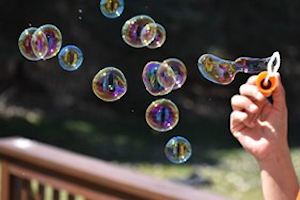
Play Ready, steady…go games together.
- In these games the adult says “Ready, steady…” and when they say “go” something exciting happens.
- Some game ideas: the adult blows bubbles / tickles the child / spins the child around / knocks down a tower of blocks / rolls a ball or car to the child / pushes the child on a swing or down a slide etc.
- Once your child is familiar with the game try pausing before you say “go” to see if they will say “go”.
- If your child cannot say “go” maybe they could use a sound or action to communicate they want the exciting part of the game to happen
- Model the word “go” then make the exciting part of the game happen.
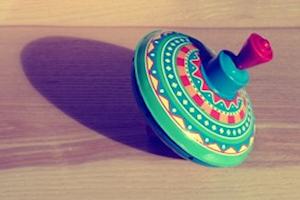
Use high–interest objects that your child needs help to operate (e.g. wind-up toys, spinning tops).
- Let your child explore the toy first and pause to see how they communicate.
- You can then model a way of communicating e.g. saying a particular word or phrase e.g. “more”, using a Makaton hand sign , pointing to a symbol, handing you the object.

Offer a little bit….then PAUSE. For example:
- If your child wants juice, put a small amount in the cup and then pause to see if they will try and communicate that they want more.
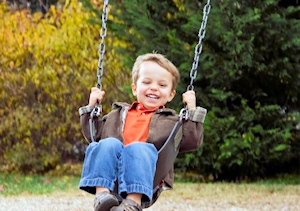
- When pushing your child on a swing, let the swing stop every so often, pause to see if they will ask for another push.
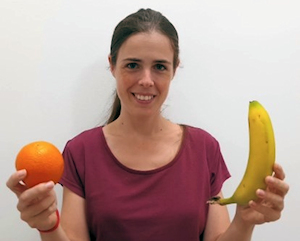
Offer a choice of two things…then pause (e.g. give choices of snack, toys, books). See our page on helping your child communicate what they want for more details on how to do this.
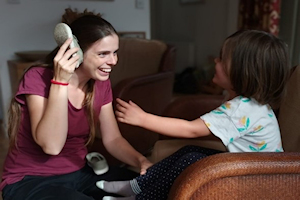
Do something unexpected….then pause. For example:
- Put your child’s shoe on her hand.
- Do an everyday routine task (e.g. dressing) in an unusual way, then pause and see your child’s reaction.
 Hide objects in surprising places so your child can tell you what they have discovered.
Hide objects in surprising places so your child can tell you what they have discovered.

When something goes wrong (e.g., juice spills, a crayon breaks, a tower of blocks falls down):
- Don’t say anything or start to fix the problem.
- Pause to see what your child does or tries to say. Try counting to 10 before saying anything.
When you create opportunities work through the following steps:
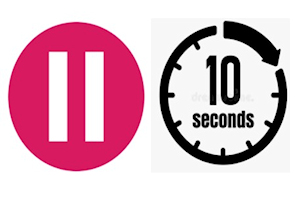
- First try and give your child time to communicate something themselves.
- You may need to pause as long as 10 seconds.
- For some children if you pause for too long they may just give up and walk away so use your own judgement as to how long to pause for.
- Look/listen to how they are communicating.
- If your child has difficulty communicating in the situation (e.g. they cannot say or sign “more” or “help” or point to symbols representing those words etc.) see if they look at you, make a sound or do an action to communicate what they want instead.
- Respond to their communication.
- Communication is not only talking.
- Respond to ANY other attempt to communicate (e.g. looking, facial expressions, gestures, signs).
- Model a clear way of communicating. For example:
- You could model the word to say, pointing, a Makaton hand sign – see our Makaton advice page.
Last updated20 Jan 2025

